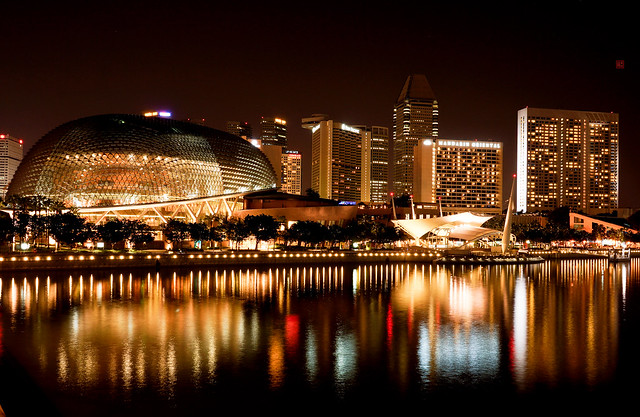Plitvice Lakes, Croatia
This is the Plitvice Lakes in Croatia, well-known and famously known for its beautiful turquoise coloured lakes and invigorating waterfalls.
To see a beautiful national park that consists of a series of 16 beautiful lakes, caves and waterfalls, one has to take the first step. The steps after you drove there by car, are rather steep. The first overhead bridge is totally made of wood.
And that sets the beginning of preparing you to lots of walking on wooden footpaths and wooden bridges.
One very important thing that you must do is to 'go to the toilet' before you start.
It is a national park that is protected and preserved. So naturally you cannot find toilets as and when you want to. Beside these restrooms, there are stops with restaurants that sells sandwiches, soft drinks, coffee and mineral water. Ice-cream stands are very popular in the warm summer. There was even sausages and roasted chicken with french fries. But remember the next toilet you will see is only in 2 or even 2.5 hours walking distance.
Since it is an organized World Heritage site, they are almost ready for a lot of tourists and visitors internationally. You are first greeted with signages about the regulations when you enter the park.
You are clearly told right in advanced that NO Fishing, No swimming, and No campfires are allowed.
However, what about this? Time ago, there were row boats on some lakes for visitors to enjoy a rowing activity. Now the row boats are removed. So this signage means you should tell your child not to stand on the row boats.
No playing like this by standing on the rowing boats.
Route C takes about six hours. It is a route with walking (about five hours of walking), boat ride and finally a tram ride. The boat ride was very pleasant even though 100 people was the maximum to go altogether from one stop to the next boat station.
In a few minutes from the signages after you have chosen a path to take, you will be warmly welcomed by an OVERVIEW. Here you must take quite a number of photos, as it is a first stop. Our advice is to take a couple of photos because there are lots of photo opportunities awaiting you later on as it just gets better and better!
You definitely want to make sure you bring enough batteries for your camera with you. From this point on, I took non-stop so many photos, so you can imagine how photogenic and beautiful this place is. To me, it's a paradise!!
That's our Bison Havanese Momo. There are many dog owners walking their dogs there. Crossing the wooden bridges or natural foot paths such as these ones can be a nice adventure and good exercise for your pets too.
The middle is a line of people crossing the wooden footbridges. You can see these lower lakes and karst landscapes. I love the deposition of travertine barriers that has created such natural dams and amazed by these geological processes that continues even today.
Most of the walking paths are nicely shaded. Going down to the lower lakes and getting nearer to see how the deposition of calcium carbonate precipitated in water.
Rather amazing through the agency of moss, algae and aquatic bacteria! That's how you get these strange yet characteristic shapes with travertine-roofed and vaulted caves as well.
Dating from the Upper Trias, Juras and Cretaceous Ages, imagine 4000 metres thick carbonates!!
So over the six hours of walking in the national park, we saw altogether 16 interlinked lakes between two mountains: Mala Kapela and Pljesevica mountain. I enjoy the entire time seeing these beautiful colours and getting so close to nature.
''The lake system is divided into the upper and lower lakes: the upper lakes lie in a dolomite valley and are surrounded by thick forests and interlinked by numerous waterfalls; the lower lakes, smaller and shallower, lie on the limestone bedrock and are surrounded only by sparse underbrush. The upper lakes are separated by dolomite barriers, which grow with the formation of travertine, forming thus travertine barriers. Travertine is mostly formed on the spots where water falls from an elevation, by the incrustation of algae and moss with calcium carbonate. The lower lakes were formed by crumbling and caving-in of the vaults above subterranean cavities through which water of the upper lakes disappeared.''-UNESCO
I will write more about the forests in the next posts.
A really beautiful area that used to be the cradle of the prehistoric Illyrian tribe of Japuds (dating from 1000 BC).
That's INVIGORATING!
Read our post on the preparations: Summer Roadtrip Preparation: Budapest to Zagreb
or about the National Park: Plitvice lake National Park, Croatia
a Balkan dish: ćevapi/ćevapčići (Croatian and Serbian)








8 comments